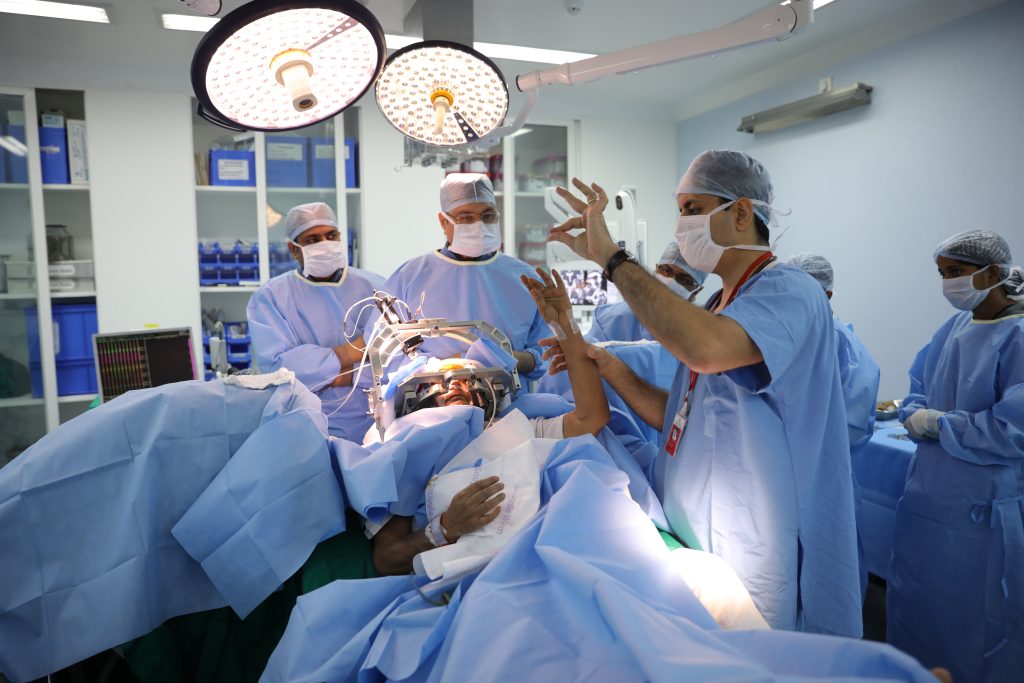Deep Brain Stimulation: A Revolutionary Medical Technology

Deep Brain Stimulation (DBS) is a revolutionary technology that involves the implantation of electrodes in specific areas of the brain. These electrodes are connected to a neurostimulator that is implanted under the skin of the chest. The neurostimulator sends electrical impulses to the brain, which can help reduce the symptoms of certain neurological disorders.
DBS was first approved by the FDA in 1997 for the treatment of Parkinson’s disease. Since then, it has been used to treat a variety of movement disorders, as well as some psychiatric disorders. In this article, we will explore the benefits of DBS and who may be a good candidate for this procedure.
What Is DBS?
DBS involves implanting electrodes in specific areas of the brain. The electrodes are typically placed in the subthalamic nucleus or globus pallidus, which are areas of the brain that control movement. The electrodes are connected to a neurostimulator, which is implanted under the skin of the chest. The neurostimulator sends electrical impulses to the brain, which can help reduce the symptoms of certain neurological disorders.
DBS is a relatively new technology, and there is still much research being done to determine the full range of benefits and potential risks. However, the technology has already shown promise in the treatment of several movement disorders and some psychiatric disorders.
What Is Deep Brain Stimulation Used For?
DBS is most commonly used to treat movement disorders, such as Parkinson’s disease, dystonia, and essential tremor. Parkinson’s disease is a chronic and progressive movement disorder that affects millions of people worldwide. It is caused by the death of dopamine-producing cells in the brain, which leads to tremors, stiffness, and difficulty with movement.
DBS can significantly improve the quality of life for patients with Parkinson’s disease who do not respond to medication or who experience significant side effects from medication. In many cases, DBS can reduce or eliminate tremors, stiffness, and other symptoms associated with Parkinson’s disease. DBS can also improve mood and cognitive function in some patients.
The psychiatric disorders that can be treated using DBS include obsessive-compulsive disorder (OCD), depression, and Tourette’s syndrome. OCD is a disorder characterized by obsessive thoughts and compulsive behaviours. Depression is a common mood disorder that can cause feelings of sadness, hopelessness, and loss of interest in activities. Tourette’s syndrome is a disorder that causes involuntary tics, such as eye blinking, facial grimacing, and vocalizations.
Who Requires DBS Surgery?
Patients with movement disorders who do not respond to medication or who experience significant side effects from medication may be candidates for DBS surgery. Additionally, patients with certain psychiatric disorders who have not responded to other treatments can also benefit from DBS.
The decision to undergo DBS surgery is made on a case-by-case basis by a team of specialists, including neurologists, neurosurgeons, and psychiatrists. The patient’s age, overall health, and other factors are taken into consideration before recommending DBS.
DBS surgery is not recommended for everyone with a movement disorder or psychiatric disorder. Patients with certain medical conditions, such as bleeding disorders or infections, may not be suitable candidates for DBS. Additionally, it is not recommended for patients who are not willing or able to comply with post-operative instructions, such as avoiding MRI scans or taking blood-thinning medications.
How Long Does It Take to Recover From Deep Brain Stimulation Surgery?
The recovery time from DBS surgery varies depending on the patient and the specific procedure performed. In general, patients can expect to stay in the hospital for a few days after surgery, during which they will be closely monitored for any complications.
After being discharged from the hospital, patients will need to avoid certain activities, such as heavy lifting or driving, for a period of time. They will also need to attend regular follow-up appointments with their healthcare team to monitor their progress and adjust the settings on their neurostimulator.
Patients may experience some temporary side effects after DBS surgery, such as swelling, bruising, or discomfort at the site of the surgery. However, these side effects usually resolve within a few weeks.
The Takeaway
In conclusion, Deep Brain Stimulation is a promising technology that can significantly improve the quality of life for patients with movement disorders and some psychiatric disorders. While the technology is still relatively new, studies have shown that DBS can offer significant benefits for patients who do not respond to medication or who experience significant side effects from medication. If you are considering DBS surgery, it is important to speak with your healthcare provider to determine if you are a good candidate for the procedure and to learn more about what to expect during the recovery process.
References:
-
- https://mayfieldclinic.com/pe-dbs.htm
-
- https://my.clevelandclinic.org/health/treatments/21088-deep-brain-stimulation
-
- https://www.parkinson.org/Understanding-Parkinsons/Treatment/Surgical-Treatment-Options/Deep-Brain-Stimulation-for-Parkinsons-Disease-What-You-Need-to-Know
-
- https://www.hopkinsmedicine.org/health/treatment-tests-and-therapies/deep-brain-stimulation-dbs-for-movement-disorders
-
- https://my.clevelandclinic.org/health/treatments/9014-deep-brain-stimulation-dbs-therapy-for-movement-disorders.
-
- https://www.mayoclinic.org/tests-procedures/deep-brain-stimulation-for-psychiatric-disorders/about/pac-20384563.
-
- https://www.healthline.com/health/deep-brain-stimulation-surgery.
-
- https://medlineplus.gov/deepbrainstimulation.html.
-
- Lozano, Andres M., and William D. Hutchison. “DBS: In Search of the Optimal Target for Parkinson’s Disease.” The Lancet Neurology, vol. 15, no. 11, Nov. 2016, pp. 1110–1111., doi:10.1016/s1474-4422(16)30201-5.
-
- Schuepbach, W. M. M., et al. “Neurostimulation for Parkinson’s Disease with Early Motor Complications.” The New England Journal of Medicine, vol. 368, no. 7, Feb. 2013, pp. 610–622., doi:10.1056/nejmoa1205158.
-
- Zesiewicz, Theresa A., et al. “Practice Parameter: Therapies for Essential Tremor.” Neurology, vol. 77, no. 2, July 2011, pp. 175–182., doi:10.1212/wnl.0b013e3182217f3c
